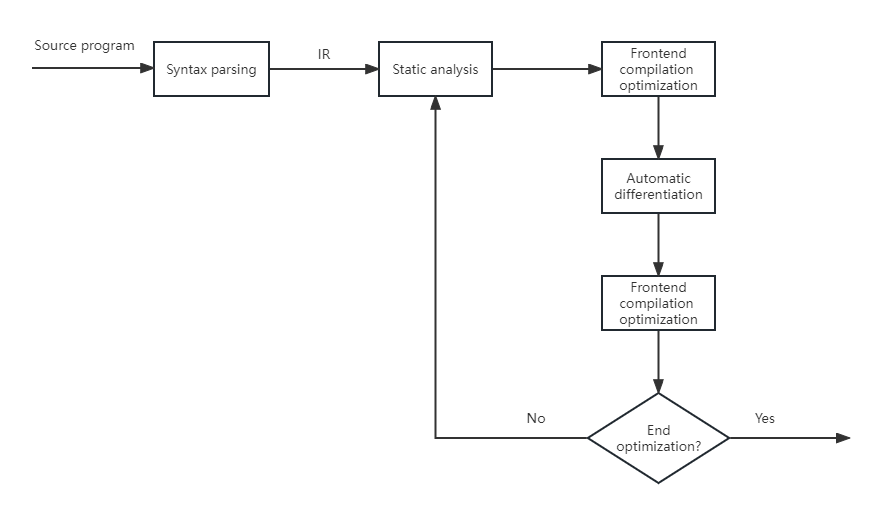5.2. Overview of AI Compiler Frontends¶
Figure :numref:ch04/compiler_frontend_structure depicts the
typical structure of the AI compiler frontend within a machine learning
framework. As AI compilers parse source programs similarly to classical
compilers, we will not detail the parsing process here. Instead, we will
explore a feature unique to the compiler frontend in a machine learning
framework - its automatic differentiation functionality. To enact
automatic differentiation, the machine learning framework requires a new
IR structure built upon classical IRs. Consequently, this section
concentrates on IRs and automatic differentiation, and later provides a
succinct introduction to basic compiler concepts, including type
systems, static analysis, and frontend optimization.

Fig. 5.2.1 Typical structure of an AI compilerfrontend¶
An Intermediate Representation is a data structure, or a form of code, employed by a compiler to represent source code. Essentially, an IR serves as a bridge between a source language and a target language during the compilation process. In classical compilers, IRs are divided into linear IR, graphical IR, and hybrid IR. However, as these classical IRs do not provide the comprehensive range of functionalities required by machine learning frameworks, developers have extended classical IRs and proposed numerous new IRs specifically for machine learning frameworks.
Automatic Differentiation is a method used to compute derivatives and efficiently resolve symbols for computational graphs. Combining the benefits of both symbolic and numerical differentiation while mitigating their shortcomings, automatic differentiation proves particularly valuable in calculating the gradient of a function. Modern AI algorithms, such as deep learning algorithms, use vast amounts of data to learn models with various parameters, and typically employ a gradient descent approach to update these parameters. Therefore, automatic differentiation is crucial to deep learning and becomes an integral component of training algorithms. Automatic differentiation generally resolves IR symbols during the frontend optimization process to generate new IRs with gradient functions.
Type Systems and Static Analysis are incorporated into the compiler frontend to help reduce potential runtime errors. A type system can avert type errors during program execution, while static analysis offers insights and other information for compilation optimization, effectively reducing issues like structural errors and security vulnerabilities in program code.
Frontend Compilation Optimization aims to tackle code efficiency issues. It is a significant aspect in both classical compilers and machine learning frameworks and is independent of specific hardware types.
